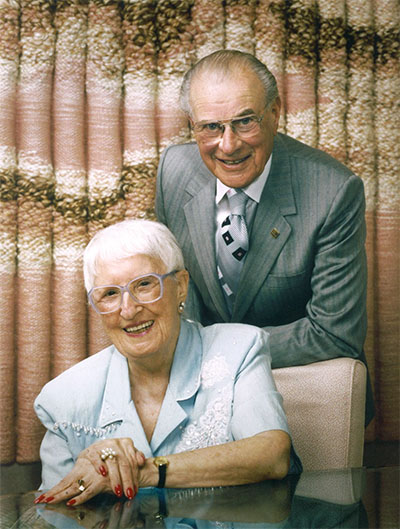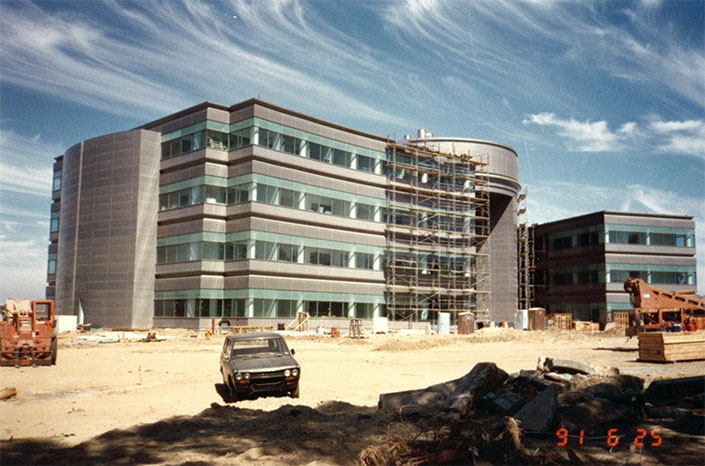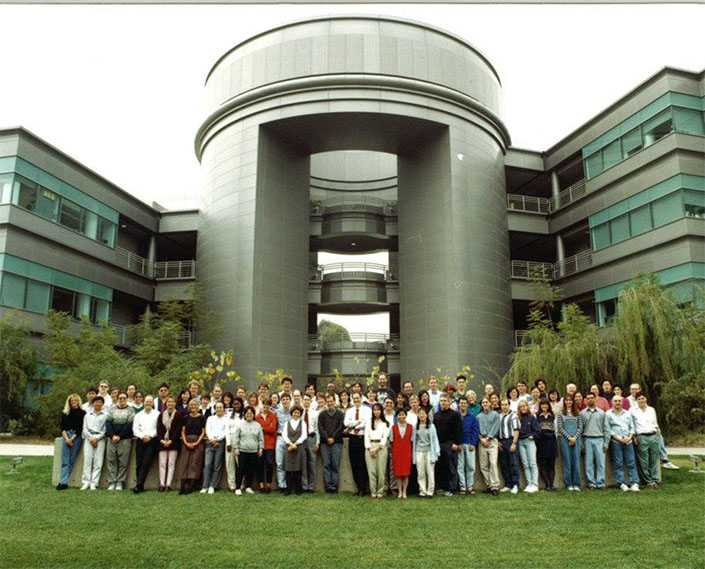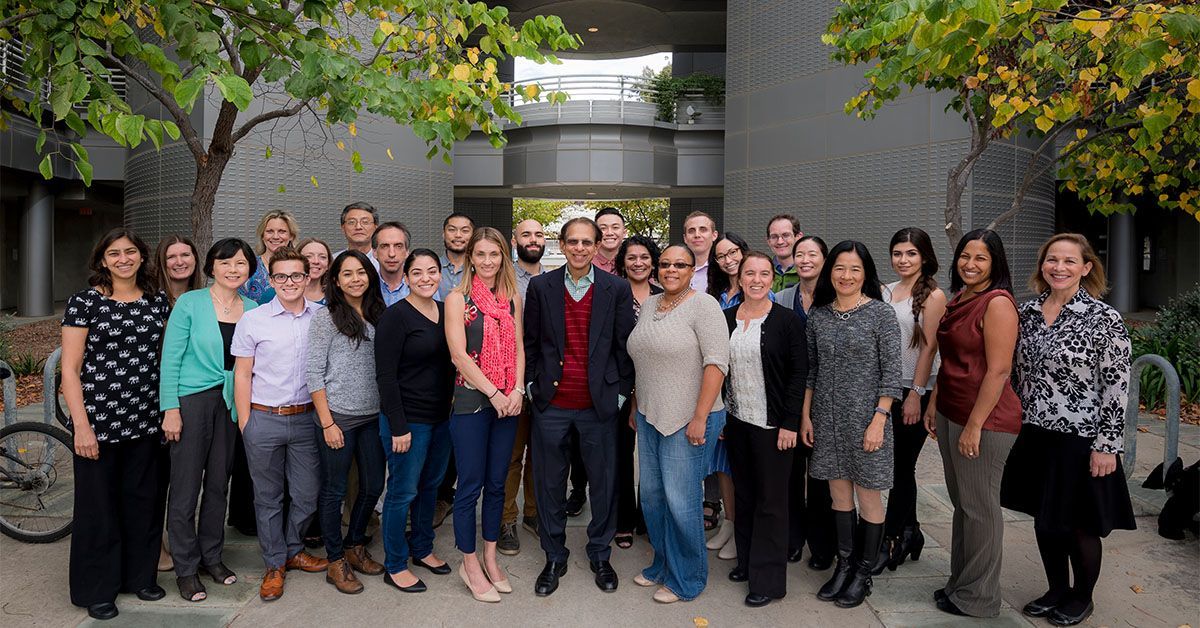Since 1983: Ahead of Its Time
The Stein Institute for Research on Aging celebrates 40 years of thought leadership in aging research
Published Date
Article Content
This story is from the 2024 issue of Discoveries, a UC San Diego Health Sciences magazine.
In 1983, UC San Diego School of Medicine became the first campus in the UC system to have an Organized Research Unit devoted entirely to research on aging. Renamed in 1992 after a generous gift from the Stein family, the Sam and Rose Stein Institute for Research on Aging promotes lifelong health and wellbeing through groundbreaking research, community education and training the next generation of researchers.

“In the past 40 years, the Stein Institute has grown from a small group of researchers to a leading academic research center, recognized locally and nationally for its impact on the field of aging,” said Alison Moore, MD, MPH, interim director of the Stein Institute. “Our Institute brings together a critical mass of scientific talent, encourages and funds aging-related research, supports education and conducts community outreach to share the latest research with those we aim to serve.”
The Stein Institute recently celebrated its 40th anniversary and continues to innovate, taking a new stance on aging research that asks not just how we can prevent the diseases and negative effects associated with aging, but also how we can help people age successfully and with the highest quality of life.
“There are researchers around the world looking at what goes wrong during the aging process, but we want to take a different approach and focus on what goes right with aging,” said Executive Director Danielle Glorioso, who has been with the Stein Institute for nearly two decades. “We look at things like resilience, wisdom, optimism and social engagement. We’ve seen firsthand that people really care about aging better, living longer and enjoying the best quality of life.”
This hasn’t always been the institute’s mission. In its earliest days, the Stein Institute for Research on Aging was like most other academic centers for aging research, focusing on specific diseases and conditions like frailty, Alzheimer’s and Parkinson’s. However, this all changed in the early 2000s, when the institute pivoted to studying successful aging rather than diseases of aging.
“We were really ahead of the curve when it came to looking at healthy aging, and we’ve had such a positive response from the community since making the change,” said Glorioso.
This positive spin on aging research then spread to the rest of UC San Diego, which in 2014 established the Center for Healthy Aging, an umbrella organization for all age-related research at the university, which continues to expand upon the groundbreaking work of the Stein Institute.
“We anticipate that we will continue to focus on healthy aging as there is so much to be learned in this space,” said Moore. “It’s also a theme that, with good reason, is of great interest to older adults and those who one day hope to be older adults.”

Age is not just a number
According to Anthony Molina, PhD, interim scientific director of the Stein Institute, promoting healthy aging also requires a deeper understanding of the biological factors underlying the aging process. Molina is at the helm of UC San Diego’s Geroscience Laboratory, which seeks to develop, test and apply predictive biomarkers of human aging.
“People who share the same chronological age vary widely with regard to their burden of age-related conditions and long-term health trajectories,” said Molina. “Our goal is to apply cutting-edge scientific approaches to research that seeks to improve the quality of life of older people.”
While a number of biological hallmarks of aging have been identified, there remain few ways to track how these change over time and might be affected by interventions to promote healthy aging.
One key area of interest for Molina’s group is the function of mitochondria, the parts of our cells that convert nutrients into energy. Their research shows that mitochondrial dysfunction can contribute to aging in a variety of ways. When our cells lack sufficient energy, this leads to a breakdown of important metabolic processes and causes irreparable damage to the cells. This “energy crisis” thus underlies the progression of many age-related diseases and conditions.
Molina and his team have discovered that the activity of mitochondria can be measured with a specific type of blood test, making it possible to investigate ways to preserve, or possibly improve, mitochondrial function in older individuals. Using this test, his team has shown that levels of mitochondrial function are related to the physical and cognitive abilities of older adults. His team is now using these and other state-of-the-art tests to identify strategies to promote healthier physical and mental aging.
“We are seeking to develop personalized treatments for older adults,” said Molina. “Reliable reporters of biological age will help us advance precision health care by accounting for an individual’s unique physiology, and this new level of precision represents the future of aging research.”
The science of resilience
While it’s important to develop ways to measure the biological indicators of age, aging also has social and emotional components that require further investigation.
One way the Stein Institute integrates the biological and social drivers of aging is through the ongoing UC San Diego Successful Aging Evaluation (SAGE) Study. This long-term study began in 2010 and is a lifespan aging study that aims to identify the factors associated with successful aging throughout the course of life.
The study includes 1,800 randomly selected San Diego residents from ages 20 to over 100 years old, and uses a comprehensive annual survey to assess a myriad of parameters associated with aging. These include physical factors like diet and mobility, but also psychosocial factors like emotional well-being and resilience, or the ability to cope with life’s hardships.
Resilience is of particular interest to Glorioso, who is a social worker by training. Older adults are uniquely vulnerable to life’s hardest experiences, including the loss of family and loved ones, physical decline and social isolation. These challenges are not only emotionally distressing, but can also contribute to chronic illnesses associated with aging. This prompted Glorioso to ask what can be done to promote resilience.
“We started looking at the literature and found that resilience was associated with improved physical health, mental health and longevity. Given that our mission has been to help enhance overall health and well-being, we got to wondering if we could develop a program to enhance resilience, which we hoped would, in turn, improve quality of life and promote longevity,” said Glorioso.
She and her colleagues created a program called Raise Your Resilience, designed to help adults increase their resilience by promoting compassion, self-compassion, empathy, gratitude and value-driven activities. They developed a manual for three and six-session programs and tested it in older adults in both a group format and one-on-one. By partnering with senior living communities and academic collaborators, they were able to test this program in California, Arizona, Illinois, England and Israel.
The researchers found that the program didn’t just help people increase their resilience — it also reduced participants’ perceived stress and depression.
Since this initial pilot, they’ve demonstrated the effectiveness of the Raise Your Resilience program in other formats and contexts, including delivering it remotely during the pandemic. The program has proven so successful that it is now available for licensing, allowing the broader community who work with older adults to provide the best care possible.
“The skills involved in building resilience are important for everybody,” said Glorioso. “We’ve already created a version of the program for caregivers of those with Alzheimer’s and dementia, and we’re also looking into adapting it for younger populations, such as high school students. While our research has the most direct impact on older adults, it’s important to us that our work reaches the wider community as well.”
Engaging the community
One of the cornerstones of the institute’s recent work has been the establishment of a Living Lab at Belmont Village Senior Living, a collaboration that grew out of the success of the Raise Your Resilience program. The lab, which officially opened in 2023, aims to engage older adults in the scientific research process as active participants and collaborators, not just research subjects.
“We want our research to reflect what matters most to the people we’re studying, not just our own priorities as scientists,” said Molina. “The best way to do that is to work closely with senior living residents and get their input on what we should be working on.”
The Living Lab is currently conducting informational interviews with Belmont Village residents to learn more about the lifestyles and behaviors that promote healthy aging. By directly connecting scientists at UC San Diego with seniors in the community, the Living Lab fosters an unprecedented level of collaboration between these groups.
“I have had the chance to be involved with a number of projects and initiatives in my time as interim director and none stand out to me more than this one,” said Moore. “I feel strongly that this is just the beginning of a new model for aging research. The Living Lab is our first step at creating a home for scientific research and interdisciplinary partnership that can impact residents right where they live, which will help us do work that is aligned with the needs of the communities we serve.”
Living Lab leaders believe the partnership with Belmont Village can benefit not just the Stein Institute, but also the wider UC San Diego scientific community. They envision the Living Lab as a resource for researchers at UC San Diego School of Medicine, Jacobs School of Engineering and the Sanford Institute for Empathy and Compassion. They also hope the lab will serve as a model that can be brought to various communities throughout San Diego County, including those that are more diverse or historically disadvantaged.
To further extend their reach, the institute is also in the process of establishing a consortium of academic aging centers across the country. This consortium will foster new collaborations and help share insights from the Living Lab, the SAGE study and other Stein Institute initiatives.
“One of the things that makes the Stein Institute so special is its capacity to serve as a resource to scientists in the UC San Diego community and around the country,” said Molina. “What makes a great academic research center is people with unique skills, expertise and resources coming together to solve problems. This is what the Stein Institute has made its legacy doing, and what it will continue to do well into the future.”

Institute faculty and staff gather in front of the completed research facility in the 1990s.
Share This:
You May Also Like
Stay in the Know
Keep up with all the latest from UC San Diego. Subscribe to the newsletter today.





